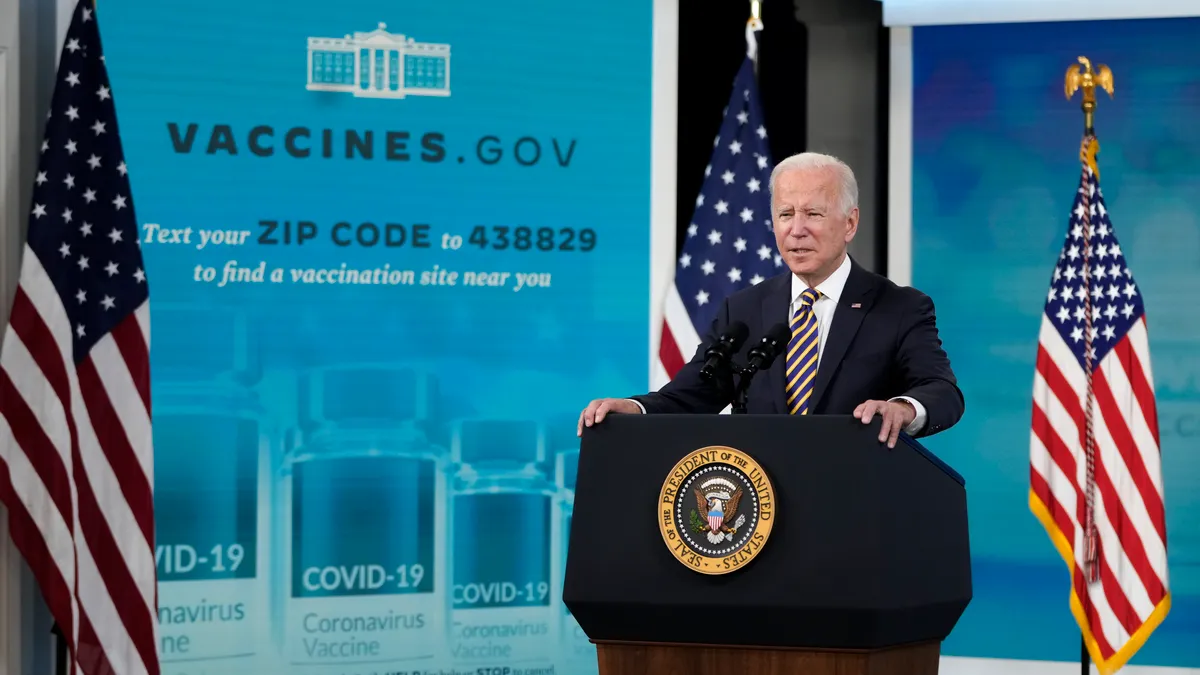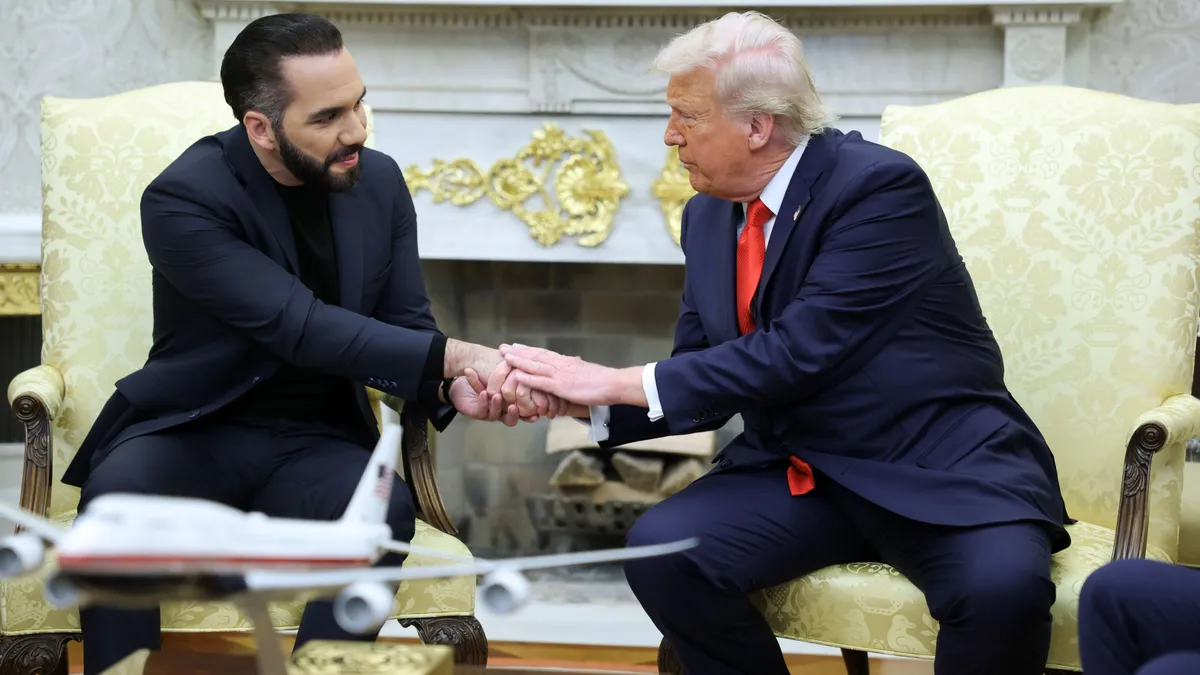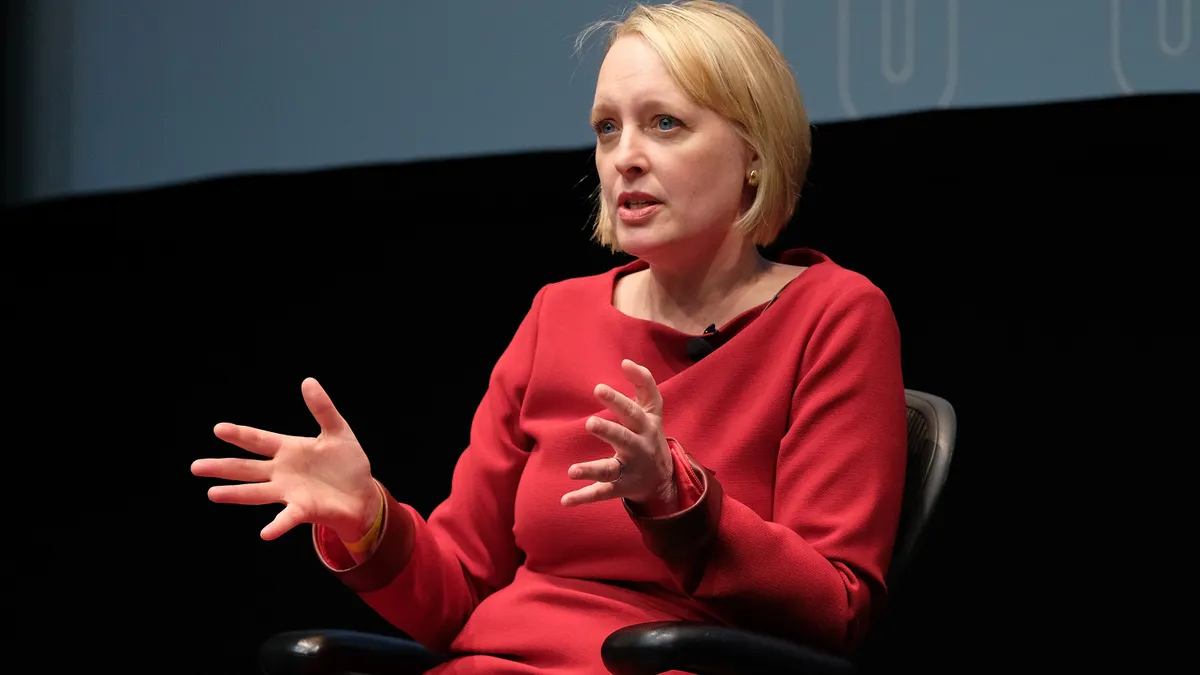U.S. organizations have joined the momentum to reopen physical workspaces after more than two years of the COVID-19 pandemic. Earlier this month, the Biden administration laid out a plan that, in part, sought to clarify the White House's approach for supporting those efforts.
Titled the National COVID-19 Preparedness Plan and published shortly after President Joe Biden's March 1 State of the Union address, the document contains references to both proposed and existing measures, ranging from federal guidance to other initiatives that would require Congressional spending.
But the latter category — which covers topics such as air filtration, ventilation and paid sick leave — reads as a more aspirational set of proposals given that the administration is "hamstrung by reality," according to Aaron Goldstein, partner at management-side firm Dorsey & Whitney. Namely, Goldstein said the White House faces the challenge of spotlighting COVID-19 measures against the backdrop of the Russo-Ukrainian War and rising inflation.
"I think a lot of these challenges are very practical and political in nature," Goldstein said of the reopening challenges employers face, including those related to staffing. "There's only so much the Biden administration can do with Congress."
Nonetheless, Goldstein and others who spoke with HR Dive identified a handful of sections from the plan with which employers may want to familiarize themselves.
Paid leave
The plan contains only one sentence on a topic that has been at the forefront of conversation on how HR can support employees during the pandemic.
Last year, the Centers for Disease Control and Prevention recommended employers offer paid sick leave for employees to recover from side effects of receiving a COVID-19 vaccine, an addendum to its prior guidance encouraging employers to offer "flexible, non-punitive paid sick leave" to sick workers.
The federal government did implement a tax credit for employers required to offer paid sick and family leave under 2020's Families First Coronavirus Response Act, but the law's provisions terminated on December 31, 2020. In its latest plan, the Biden administration said it would work with Congress to reinstate those tax credits, but did not provide a timeline.
Employers, Goldstein said, are likely to fall into one of two broad categories on this issue. The first consists of employers that have continued to offer paid sick leave, not only to respond to COVID-19, but also to attract talent in a candidate-friendly market. These employers, he continued, are not likely to be impacted by future spending on sick leave mandates because their benefits might go beyond what federal legislation would require.
Other employers, some of whom are struggling, may decide to do the bare minimum to meet requirements, Goldstein said, even if tax credits are reinstated; "If Congress enacts tax credits, you may see some employers jump on the bandwagon there. But with rampant inflation, I'm not sure how much money Congress is going to dedicate to this."
An update from OSHA?
After the U.S. Supreme Court struck down the Occupational Safety and Health Administration's emergency temporary standard requiring employers to mandate COVID-19 vaccination, legal observers immediately began to speculate what alternative routes OSHA might take to require the vaccine.
The White House plan hints at an answer: "The Department of Labor's Occupational Safety and Health Administration (OSHA) will update workplace guidance to better equip employers with the tools they need to ensure safe workplaces, including guidance on how employers can continue to support increased vaccination and boosting of their employees; support workers such as people who are immunocompromised who choose to wear high-quality masks; limit workplace-based infections; and enhance ventilation."
Goldstein said, while OSHA's specific plans are still unknown, the high court's ruling made it "really clear that you can't issue blanket regulations that treat all workplaces the same." OSHA may propose new vaccination regulations in the future, he continued, but that also may depend on the extent of COVID's spread.
"If we get a real spike, it's going to be something OSHA has to address and push as far as the Supreme Court will allow," Goldstein said. "If the numbers are low, you might see OSHA take their foot off the gas."
Other factors, such as whether a new standard would be more tailored to specific, high-risk workplaces and whether OSHA issues new regs through a standard notice-and-comment process, also may come into play, Goldstein noted.
Aside from vaccination, the White House said it would publish a Clean Air in Buildings Checklist that organizations can use to improve ventilation and air filtration, which the Environmental Protection Agency touched upon in a "Clean Air in Buildings Challenge" document published this month.
Ventilation could be key to ensuring business continuity during both future COVID-19 variant outbreaks as well as future pandemics, according to Jeff Levin-Scherz, population health leader, health and benefits, North America at Willis Towers Watson. Such measures also may help mitigate other respiratory diseases in the workplace, such as influenza — "it's not just a COVID thing," Levin-Scherz said.
But Goldstein said, for employers, other concerns are likely to take priority over ventilation and other filtration. He spoke about the more urgent challenges employers face in both attracting workers and complying with a web of federal, state and local laws regarding workplace safety.
"The employers I've been counseling have been struggling to deal with 20 or 30 different regulatory schemes," he continued. "That eats up a lot of bandwidth."
Funding for COVID-19 testing, treatments
In January, the administration announced the purchase of at-home, rapid COVID-19 tests kits to be delivered directly to U.S. households. Its latest plan includes a proposal to expand on that initiative by setting up "One Stop Test to Treat" locations at which the public will be able to receive free testing as well as free antiviral treatment pills.
The treatment the White House is specifically referencing is Paxlovid, a Pfizer product which received emergency use authorization from the U.S. Food and Drug Administration in December 2021 to treat mild-to-moderate COVID-19 in adults and certain pediatric patients ages 12 and older. Paxlovid is a particularly important therapeutic, Levin-Scherz said, and would presumably be considered a medical necessity under an employer-sponsored health plan.
"The big thing for employers to do now is to use this lull to plan so that they can be ready if and when there is a new wave."

Jeff Levin-Scherz
Population health leader, health and benefits, North America at Willis Towers Watson
Recent efforts to invest additional funding into home testing and therapeutics have not passed in Congress, however, Levin-Scherz noted. Deadlock on the subject has persisted for weeks. Without federal funding, employers and their insurers may see new expenses resulting from testing or treatment. Another COVID-19 prevention therapy, Evusheld, also could be impacted by a lapse in funding, Modern Healthcare reported.
"These are drugs that are excellent and that save people's lives, but they're not cheap," Levin-Scherz said.
Preparing for future variants
Other elements of the plan have less direct impact on employers, but lay out additional steps the administration may seek to address potential new COVID-19 variants, such as data collection, sequencing, wastewater surveillance and response playbooks.
Each of these components may serve to reassure employers in the event of another outbreak, but the current moment provides an important opportunity for employers to formulate their own contingencies, according to Levin-Scherz.
"The big thing for employers to do now is to use this lull to plan so that they can be ready if and when there is a new wave," he said. "Employers being ready for this actually makes their employees feel substantially more confident."
To that end, Levin-Scherz said he advised employers to be transparent with workers about these preparations and mitigation strategies, some of which he said may not be well-publicized or recognized; "some of the really good things employers are doing are utterly invisible."
That is not always an easy task around topics such as masking, particularly given evolving guidelines from the CDC and other public health authorities, according to Goldstein. Employers, he said, tend to rely on the CDC in particular as a "north star" for their own policies, but public health guidance could be met with apprehension from employees.






















